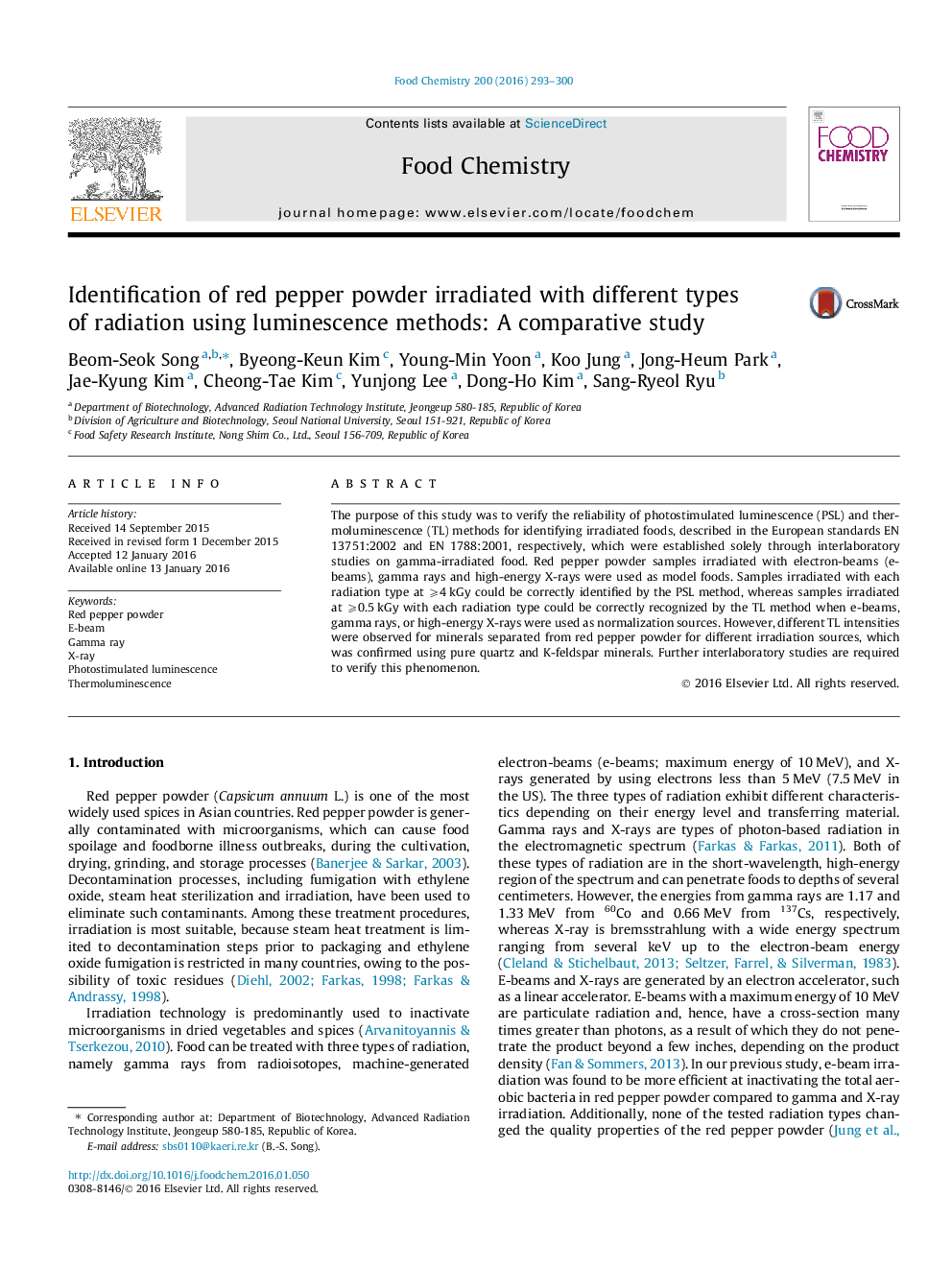| Article ID | Journal | Published Year | Pages | File Type |
|---|---|---|---|---|
| 1184099 | Food Chemistry | 2016 | 8 Pages |
•Red pepper powder irradiated with 3 radiation types was detected using PSL and TL.•PSL can detect samples irradiated at ⩾4 kGy, regardless of the radiation type.•TL ratios varied with the radiation type used, due to the different TL intensities.•Low or high TL intensity for e-beams or low-energy X-rays was observed.•Interlaboratory studies are needed to confirm the difference in TL intensity.
The purpose of this study was to verify the reliability of photostimulated luminescence (PSL) and thermoluminescence (TL) methods for identifying irradiated foods, described in the European standards EN 13751:2002 and EN 1788:2001, respectively, which were established solely through interlaboratory studies on gamma-irradiated food. Red pepper powder samples irradiated with electron-beams (e-beams), gamma rays and high-energy X-rays were used as model foods. Samples irradiated with each radiation type at ⩾4 kGy could be correctly identified by the PSL method, whereas samples irradiated at ⩾0.5 kGy with each radiation type could be correctly recognized by the TL method when e-beams, gamma rays, or high-energy X-rays were used as normalization sources. However, different TL intensities were observed for minerals separated from red pepper powder for different irradiation sources, which was confirmed using pure quartz and K-feldspar minerals. Further interlaboratory studies are required to verify this phenomenon.
